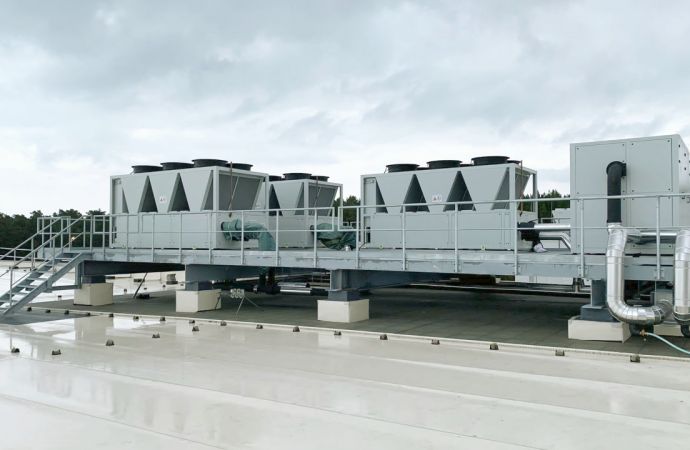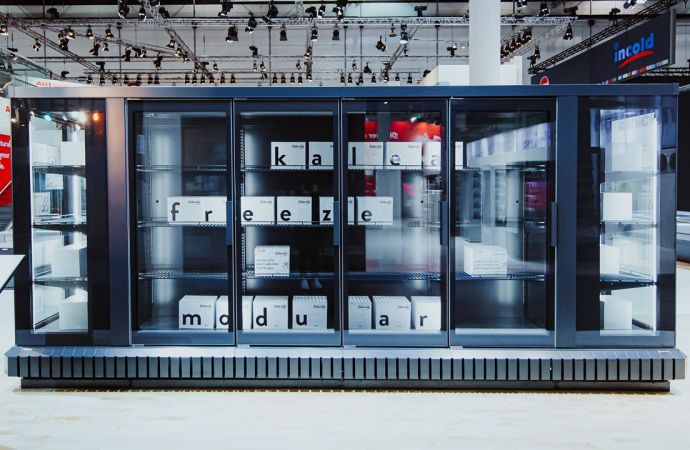European retailers are showing how natural refrigerants can help them to adapt to changing consumer habits and reduce the environmental footprint of their stores. HVAC&R leaders from Australia and New Zealand were at EuroShop 2017 to learn from their European counterparts.

European retailers are showing how natural refrigerants can help them to adapt to changing consumer habits and reduce the environmental footprint of their stores. Progressive HVAC&R leaders from Australia and New Zealand were at EuroShop 2017 to find out more. Accelerate Australia & NZ reports from Düsseldorf, Germany.
Emulating European solutions back home
Technological innovation, regulatory change and the drive to reduce energy consumption are driving leading European retailers to adopt CO2, ammonia and hydrocarbon solutions for HVAC&R applications – trends which their counterparts in Australia and New Zealand are keen to tap into as they seek a competitive edge.
As the sun set on EuroShop – held on 5-9 March – for another three years, participants from Australia and New Zealand were in reflective mood ahead of the long flight home.
“We wanted to be able to leave with a clear understanding of how natural refrigerants were being implemented in similar retail environments,” Stuart Saville, national refrigeration engineering manager at Australian retail giant Coles, told Accelerate Australia & NZ.
He is confident that EuroShop delivered in this regard. “The opportunity to get some time with industry leaders was the highlight. We will be able to apply what we’re learning from these new relationships in new projects, enabling us to leap ahead with our designs,” Saville said.
What challenges lie ahead in emulating similar natural refrigerant solutions back home? “Our challenge will be to implement these lessons in our environment – a challenge we are today knee-deep in and relishing,” he enthused.
Jonathan Fryer, director of IESCO Engineering Services – a Hawthorn, Victoria-based refrigeration consultancy – was impressed with how energy efficient HVAC&R technologies have become.
“I always get a real boost in terms of thinking about energy efficiency, as soon as you see what people in Europe are doing. They seem to be a lot more focused on energy efficiency,” Fryer said.
“By the time this stuff trickles down to Australia, we kind of lose some of the message. That’s why it’s important for us to travel to EuroShop and get that stuff straight from the horse’s mouth,” he argued.
For some years now, we’ve been watching the global trends with CO2 transcritical refrigeration – with an understanding that once the technology evolves to suit our climatic conditions, we’ll be in a great position.”
– Stuart Saville, Coles
In view of the worldwide phase-down of HFCs, there was a sense among stakeholders attending EuroShop that the HVAC&R industry in Australia and New Zealand must begin adopting long-term alternatives to HFCs – and quickly.
“In a way, the business case for natural refrigerants in Australia is much more strong because of the absence of strong policy and subsidies,” argued Coles’ Saville.
New Zealand-based manufacturer EcoChill is convinced that natural refrigerants are the way to go. It has already installed over 20 transcritical CO2 systems in New Zealand at 14 different sites. “For us, the opportunities with naturals are huge,” said Managing Director Matthew Darby.
Upon arriving at EuroShop, “the first thing that struck me was just how commonplace it is now to see natural refrigerant solutions being offered by large manufacturers,” he said.
“If I think back to the last EuroShop three years ago, there were only a very small handful of manufacturers making high-pressure CO2 or transcritical-capable CO2 equipment. Even fewer were active in the hydrocarbons space. This time around, just about everyone is making either or both,” he said.
More options for all store formats
The European trend towards providing natural refrigerant-based cooling solutions for convenience store formats is not going unnoticed by observers from afar. “We’re seeing development of small packaged units that can do anywhere from three to 50 kW. They are mainstream now, and readily accessible. That’s very pleasing to see,” said Darby.
“We’re working very hard to make connections between us in New Zealand and our key partners based in Europe, so that we can bring this technology to New Zealand as quickly as possible,” he said.
IESCO’s Fryer is excited by the potential for larger systems too. “We’re certainly getting to the point now” where CO2 transcritical systems, with innovations such as parallel compression and adiabatic pre-cooling, “are fairly mature technology,” he said.
“I don’t think there are any technical barriers in terms of taking that equipment up,” Fryer said. As for the Australian market, “it’s now just a matter of justifying the cost and getting clients to show the passion to perhaps spend a little bit extra to safeguard their future options,” he argued.
Related stories



